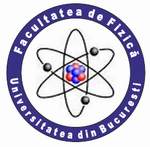| |
 |
UNIVERSITY OF BUCHAREST
FACULTY OF PHYSICS Guest
2025-10-05 22:39 |
 |
|
|
|
Conference: Bucharest University Faculty of Physics 2025 Meeting
Section: Atmosphere and Earth Science; Environment Protection
Title:
Is Suburban Air Quality Catching Up to the City? A Case Study from the Bucharest Greater Area
Authors:
Bianca MIHALACHE (1), Lucica DUMITRACHE (COSTACHE) (2), Gabriela IORGA (2,1)
*
Affiliation:
1) University of Bucharest, Faculty of Physics, Str. Atomistilor 405, Magurele, 077125 Bucharest, Romania
2) University of Bucharest, Faculty of Chemistry, Bd. Regina Elisabeta 4-12, 030018 Bucharest, Romania
E-mail
mhl.bianca10@gmail.com
Keywords:
Air pollution, NOx, PM₁₀, PM₂.₅, suburban pollution, hazard quotient
Abstract:
There are some scientific publications which mention that due to the rapid development of some suburbs of some cities, in the last 20 years the gap between pollution in the central urban area and the suburban area has narrowed. However, there are many urban areas for which this has not been emphasized and therefore it is difficult to draw a general conclusion. Therefore, a need arises to analyze the time series of the main pollutants in as many areas as possible.
On the other hand, if this hypothesis turns out to be valid, it means that it is possible that pollution in suburban areas bordering larger cities may be sufficiently high to have a greater impact on human health.
Present research is focused on the analysis of time series of NOx, PM₁₀, and PM₂.₅ in Bucharest Greater Area. The present work also tests the hypothesis that the impact on human health could be greater in suburban area. We statistically analyze time series of NOx, PM₁₀, and PM₂.₅ mass concentrations at three types of stations (urban background, urban traffic, and suburban background) over a 5-year period 01.01.2020–31.12.2024, which includes the period of restrictions caused by the COVID-19 pandemic. For estimating the impact on human health, the hazard quotient method is used, which considers the exposure to measured levels of pollutants in relation to the WHO recommended reference concentrations in 2021.
|
|
|
|